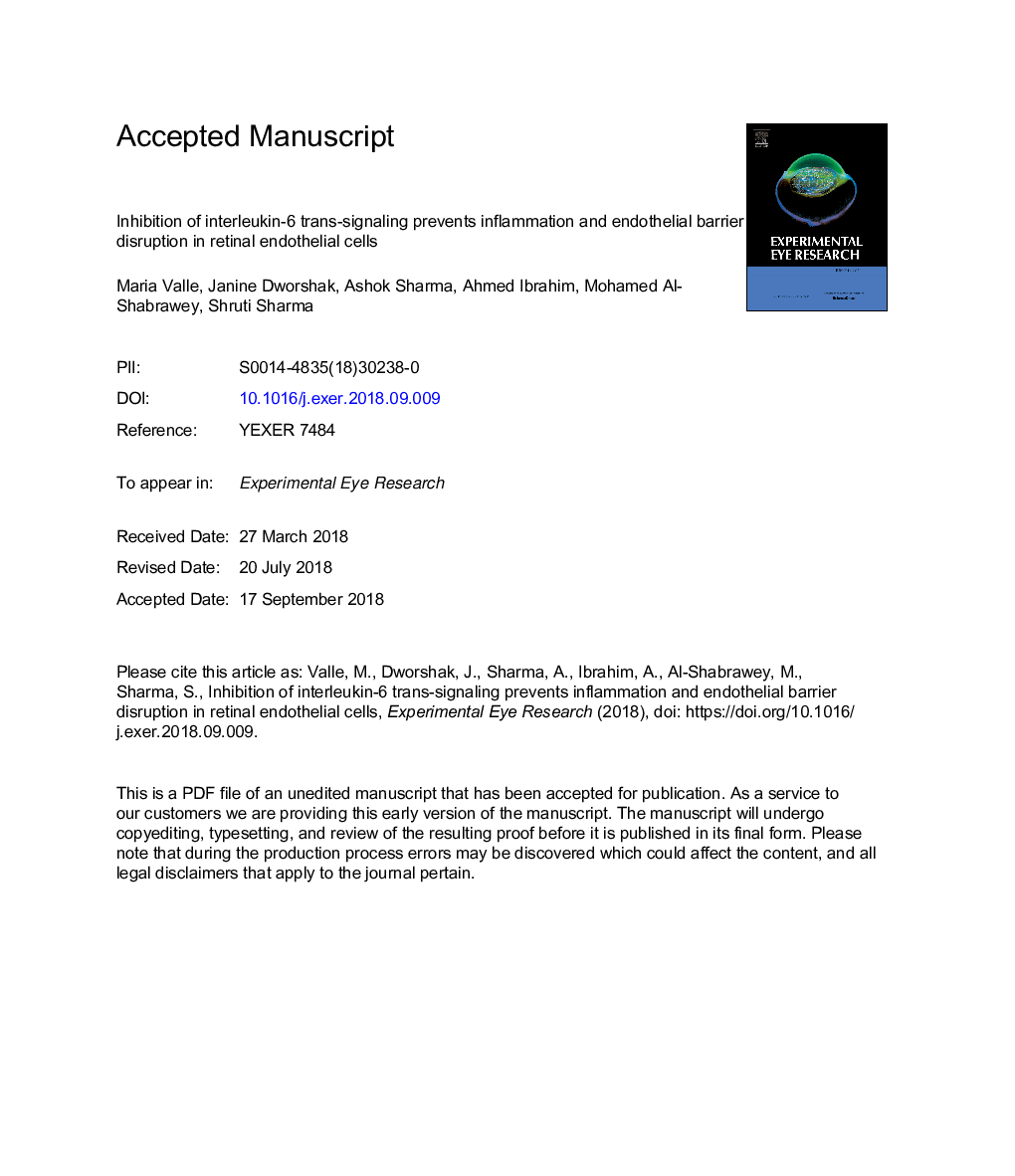| Article ID | Journal | Published Year | Pages | File Type |
|---|---|---|---|---|
| 11025395 | Experimental Eye Research | 2019 | 30 Pages |
Abstract
Vascular inflammation plays a critical role in the pathogenesis of diabetic retinopathy. Recently, Interleukin-6 (IL-6) trans-signaling via soluble IL-6 receptor (sIL-6R) has emerged as a prominent regulator of inflammation in endothelial cells. This study was designed to test the hypothesis that selective inhibition of the IL-6 trans-signaling pathway will attenuate inflammation and subsequent barrier disruption in retinal endothelial cells. Human retinal endothelial cells (HRECs) were exposed to IL-6 and sIL-6R to induce IL-6 trans-signaling and the commercially available compound sgp130Fc (soluble gp-130 fused chimera) was used to selectively inhibit IL-6 trans-signaling. IL-6 trans-signaling activation caused a significant increase in STAT3 phosphorylation, expression of adhesion molecules, ROS production and apoptosis in HRECs whereas a significant decrease in mitochondrial membrane potential and NO production was observed in IL-6 trans-signaling activated cells. These changes were not observed in cells pre-treated with sgp130Fc. IL-6 trans-signaling activation was sufficient to cause barrier disruption in endothelial monolayers and pre-treatment of HRECs with sgp130Fc, maintained endothelial barrier function similar to that of untreated cells. Thus, in conclusion, these results indicate that IL-6 trans-signaling is an important mediator of inflammation, apoptosis and barrier disruptive effects in the retinal endothelial cells and inhibition of the IL-6 trans-signaling pathway using sgp130-Fc attenuates vascular inflammation and endothelial barrier disruption.
Related Topics
Life Sciences
Immunology and Microbiology
Immunology and Microbiology (General)
Authors
Maria L. Valle, Janine Dworshak, Ashok Sharma, Ahmed S. Ibrahim, Mohamed Al-Shabrawey, Shruti Sharma,
